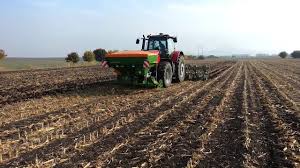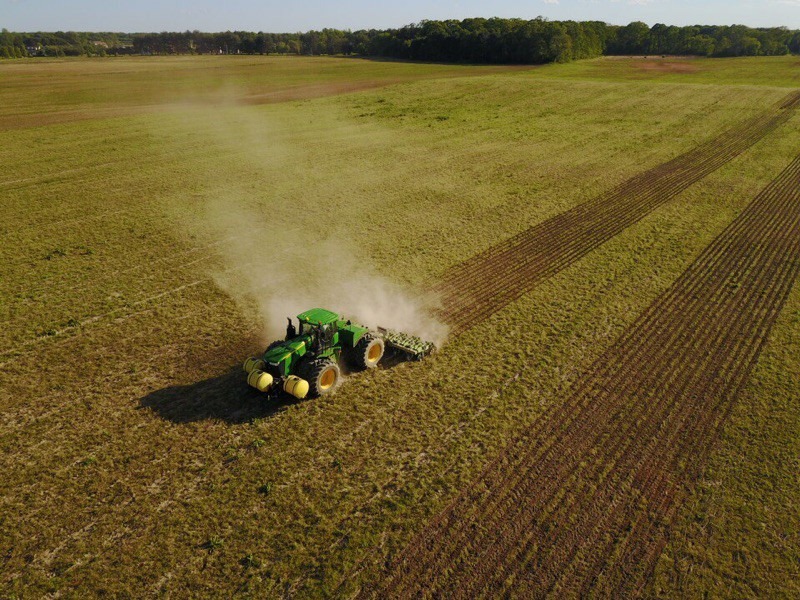Please read this without the slowed jabbing response of the “yeah, yeah they all are alike with the mantra that Compaction of Soils cause problems”. Nor does this mean go out as soon as the soils allow and tear, rip, plow, disk, chisel, burn diesel fuel until the fuel provider says I can’t get there today nor tomorrow. Maybe that is a little melodramatic. As you read this blog on the last day of December 2019 going into a new decade, consider what 1700+ opened soil pits in fields all across the United States and several foreign countries, hundreds of penetrometer readings and measuring root lengths and depths which for me take happily hours of up-close-and-personal work, all for the sake of helping farmers know their soil conditions and improve their farming practices.
So what is the big deal? Both in my governmental career (34 years) and now in the private sector since 2006 working for Orthman Manufacturing, Inc, I have worked and still do to provide the farmer better understanding of the soils we attempt to grow food crops in and produce a yield of grain, root crops, vegetables, nuts, citrus, forage and fiber. With the advent of bigger tractors, larger planters, sprayers, combines (harvesters), grain wagons, large disk-chisel tools and yes even larger vertical tillage implements with variable gang angles – farmers still compact soils. In 2019 I admit folks it was a do or maybe not even grow anything.
Considering the soil compacted issue and what these four scientists wrote in a paper that I read during this end of the year set of days following Santa’s arrival and fly-by. In Soil & Tillage Research, an Elsevier technical publication they published “Effect of soil compaction on photosynthesis and carbon partitioning within a maize-soil system” 2003. That compacted soils decrease stomatal opening in the leaves of corn which means a decrease in carbon assimilation to the fruiting body of the plant and to the leaves, stems and nodes. Okay what did I say? Sugars, cellulosic materials, lignin, other carbon materials that develop leaf tissues, stem size and length, number and size of kernels on the cob – all are reduced as well as root growth by 10 to 28% especially in the first 50 days of growth. A good thing though — Soil rhizodeposition, an outpouring of carbon based materials are released to the area surrounding the roots to feed the microbial biomass by secretions and excretions. The microbes get treats but the plant suffers!!
Image 1:
Birdseye view of an Orthman 1tRIPr doing it right
Courtesy: Wellacrest Farms
Many of you already know this. How we treat the soil in pre-plant tillage to planting to harvest operations can and does have profound impact on the soil ladies and gentlemen. Carrying out smarter tillage practices such as Strip-Till to prepare the seedbed can offer significant reduction in what lateral tillage operations have done since the plow turned over the Prairies of the United States in the 1800’s. We have better ways and methods than the moldboard plow folks. The scientists further detailed that water relationships are directly in a negative fashion effectively reducing biomass production and potentially yield since they did not take this to grain harvest. These folks said it with the review processes and the print of a professional journal.
It is my wish that when tilling to prepare a seedbed the method of Strip-Till greatly lessens the issue of soil compaction in what we call the Strip-Till Zone. All this allows for more medium and larger pores to return to the upper portions of the soil profile because roots are not restricted from developing early on in the crops life, water intake can improve, nutrients can be strategically placed in the root pathway and the plant can grow, respire and assimilate carbon for a productive outcome. I can go on.
What came from this paper was what I have said for all these years, “soil compaction unless we are building a pad for an oil well or highway or a large 10 story building is limiting plants from reaching their genetic potential and you the farmer making reasonable profits.”
Keep watching, reading and do not hesitate to contact us at Orthman Manufacturing how the Strip-Till System of farming today’s row crops is a best management practice that can put dollars into the bank.
Image 2:
In Hungary, an example of grower placing nutrients, strip-tilling for the 2018 crop Courtesy: KITE Z.Rt.

